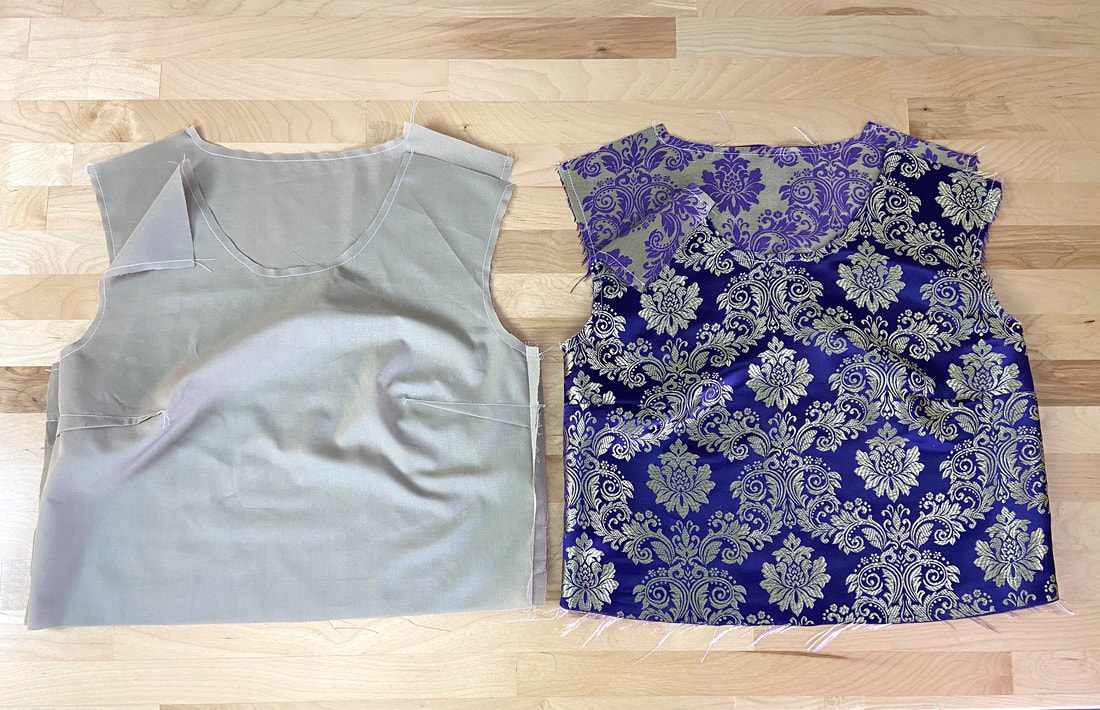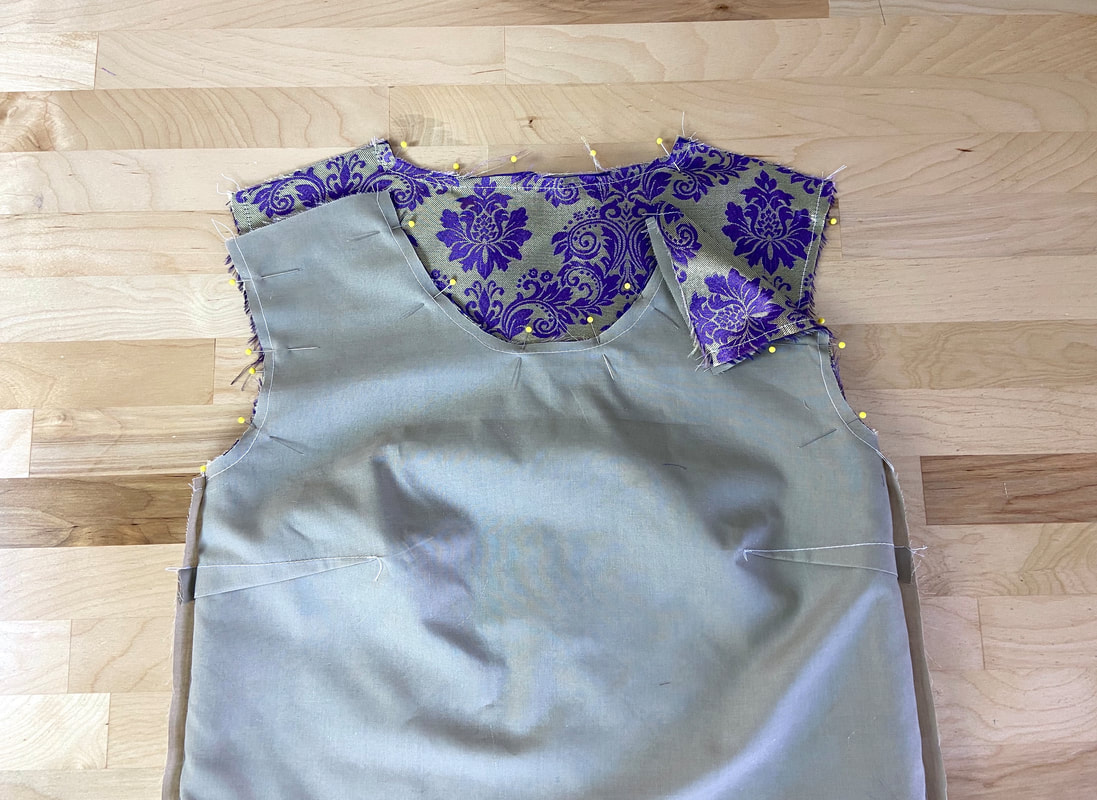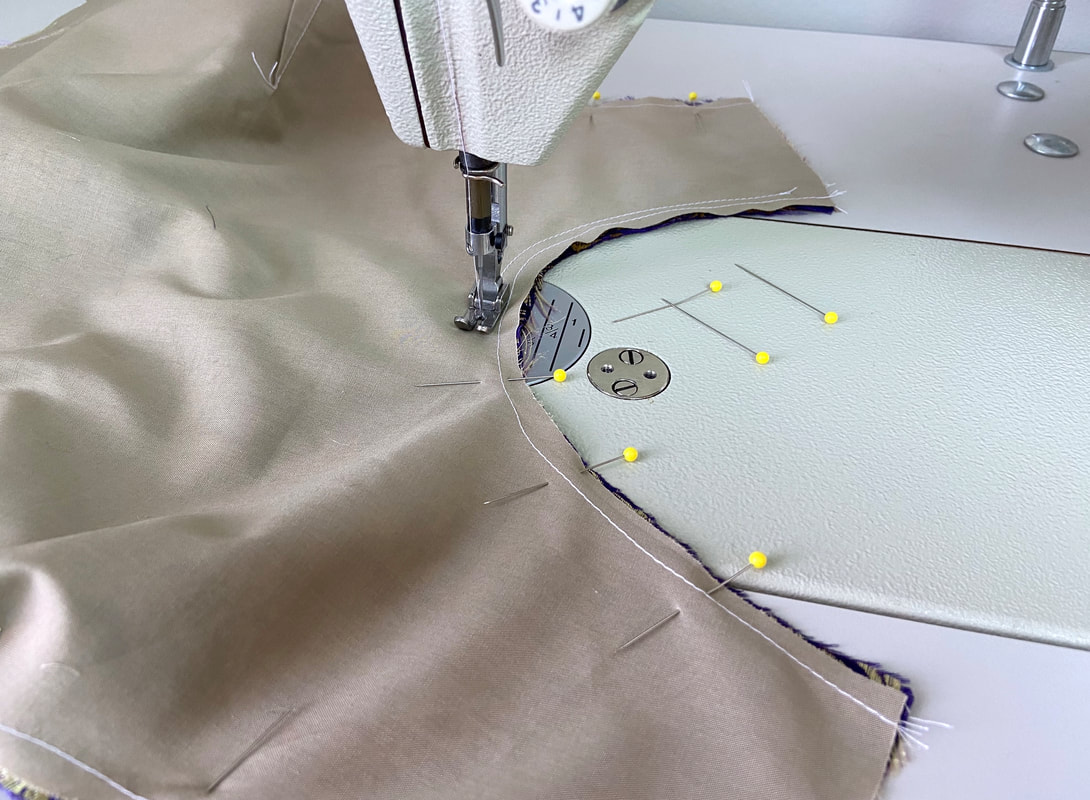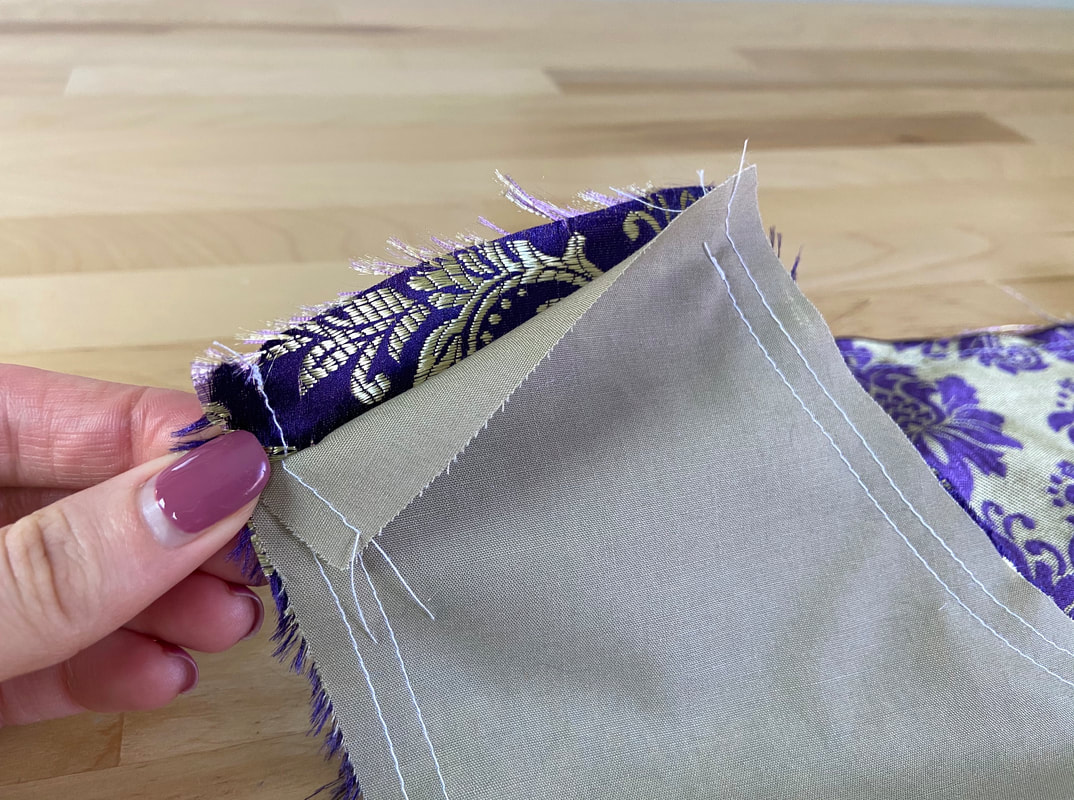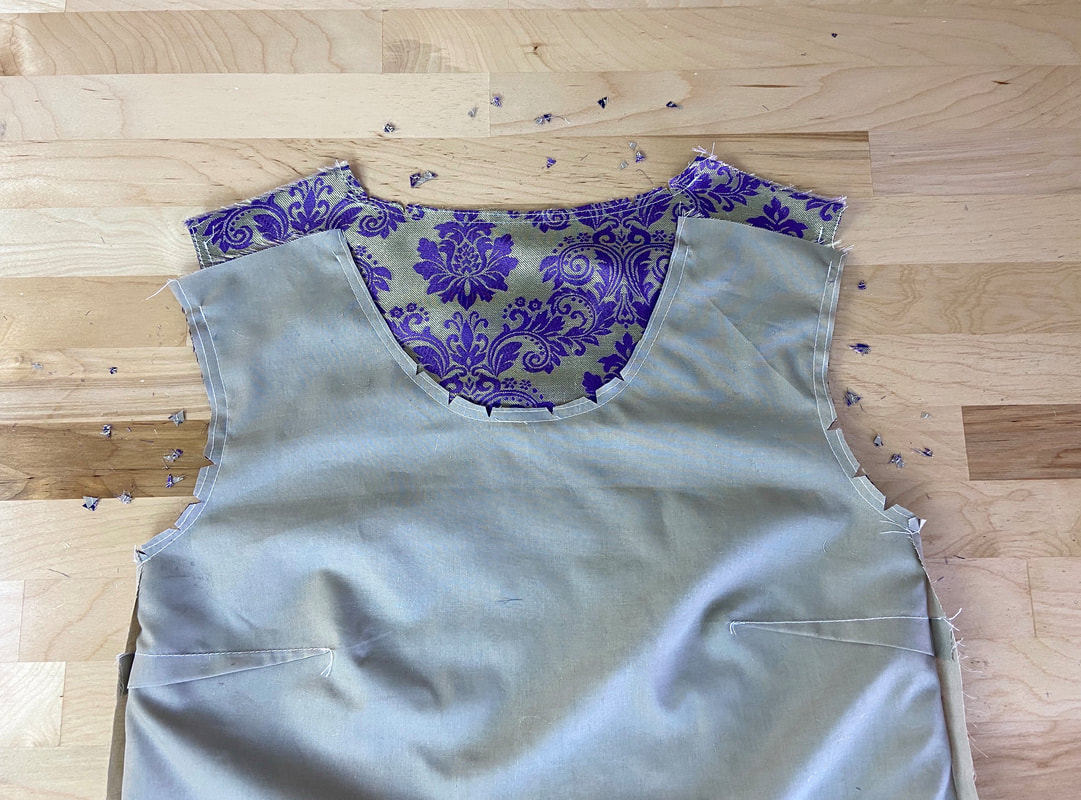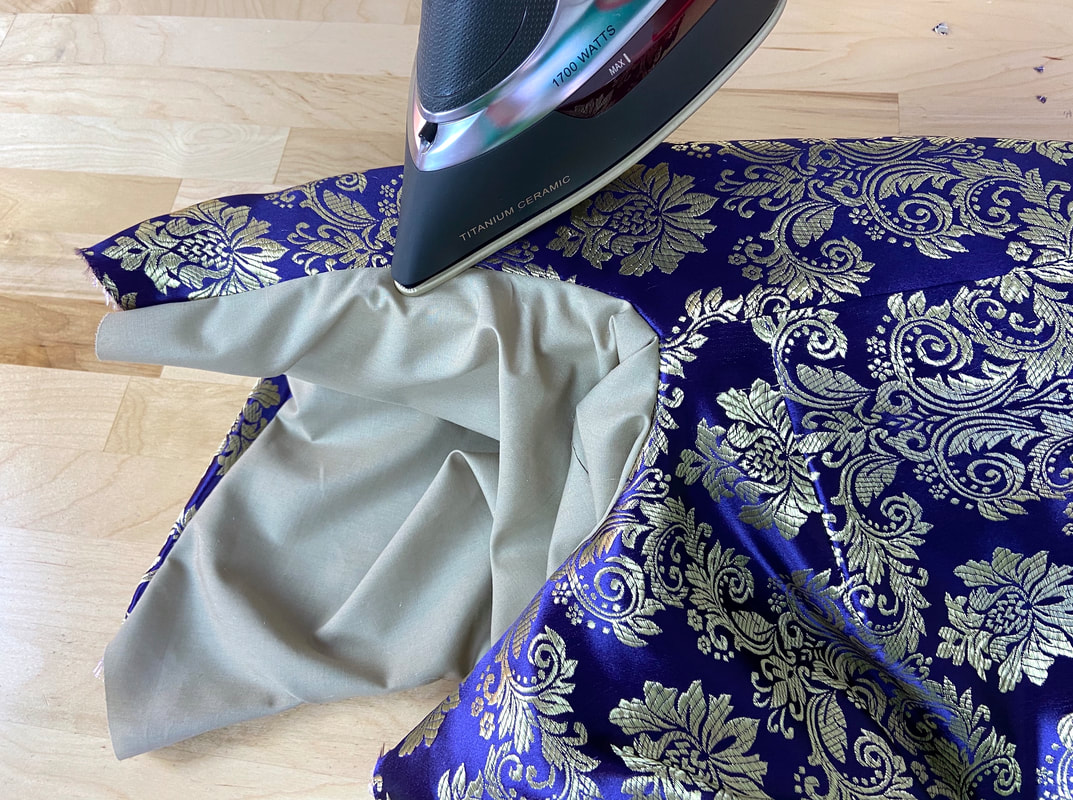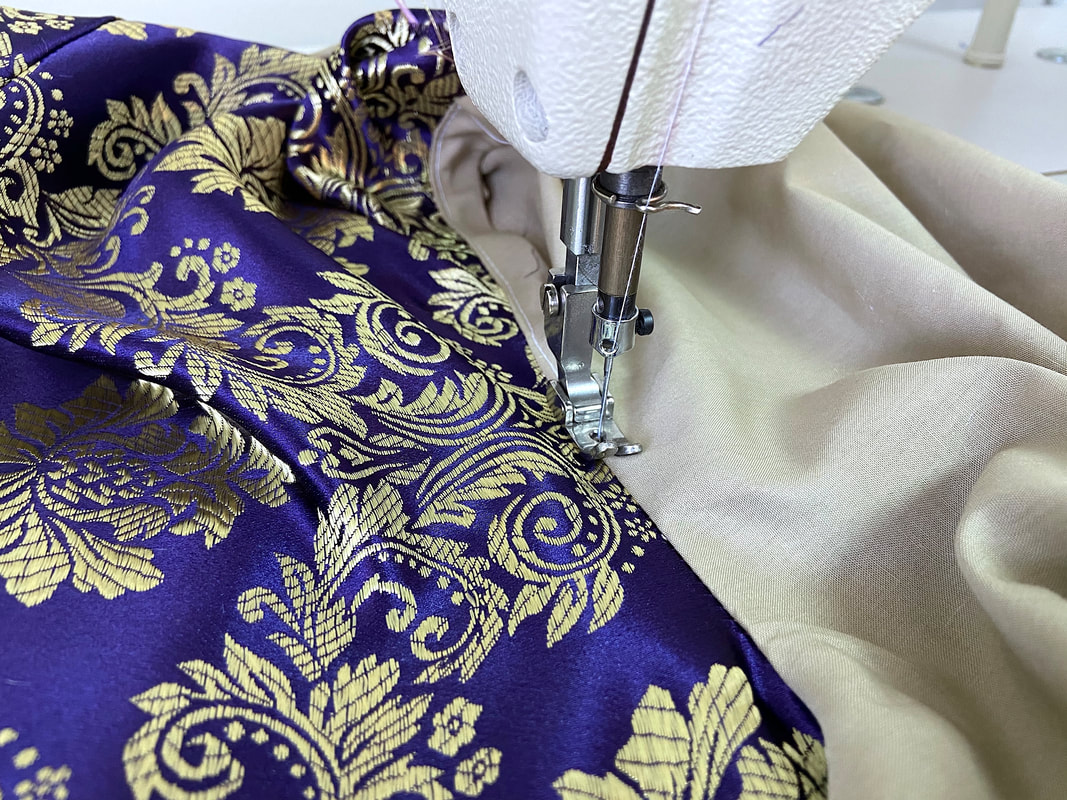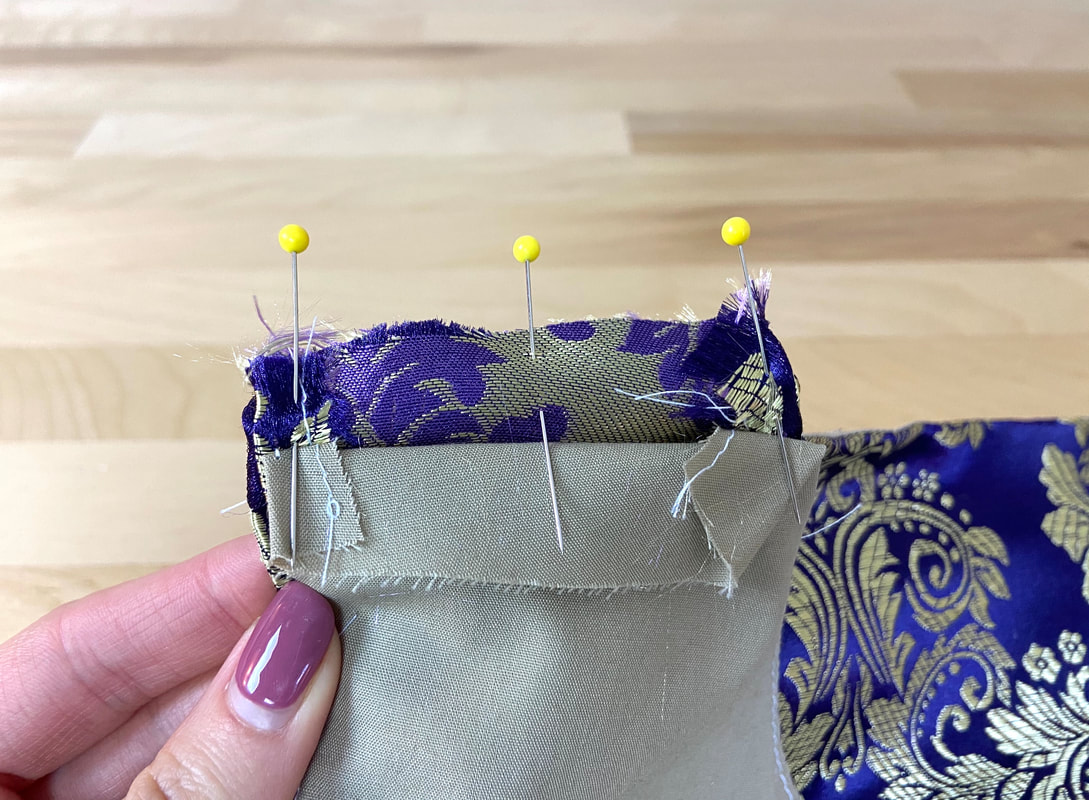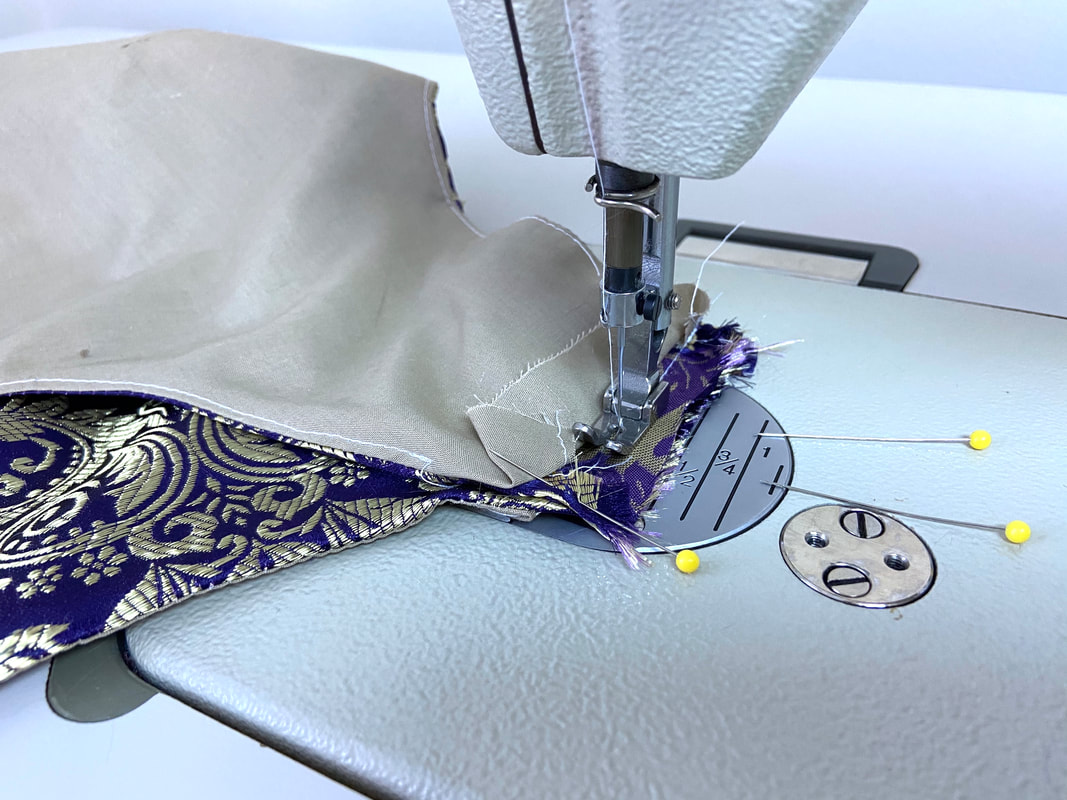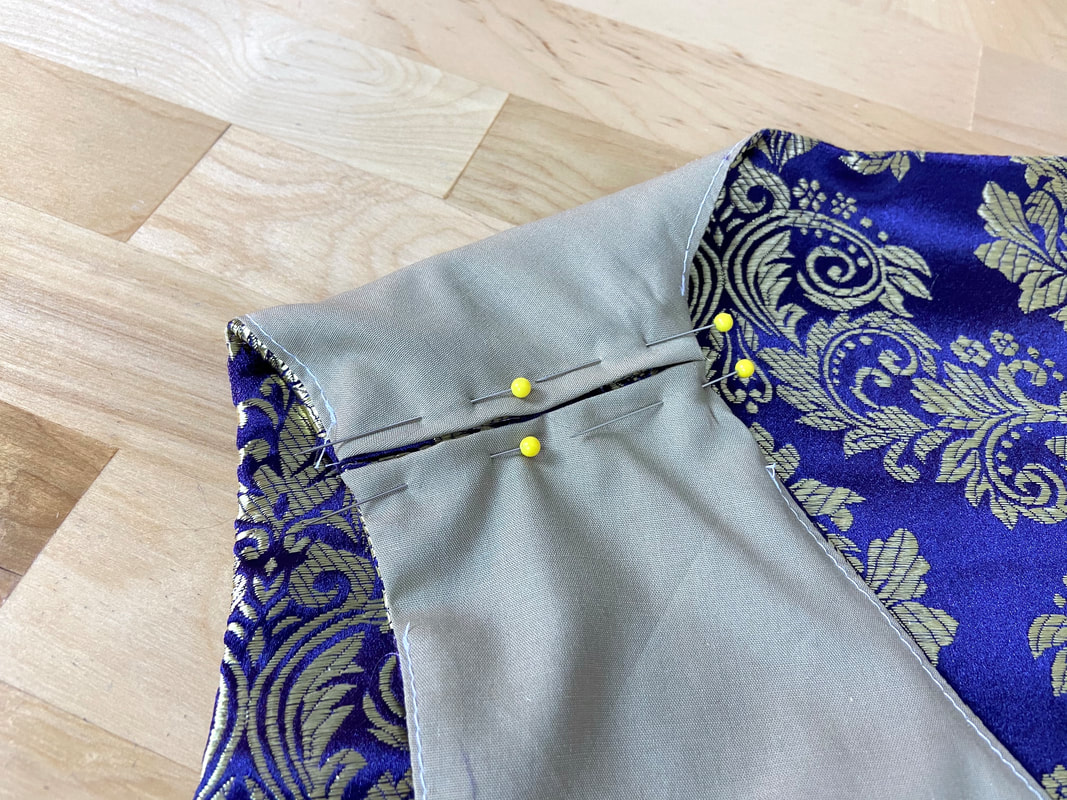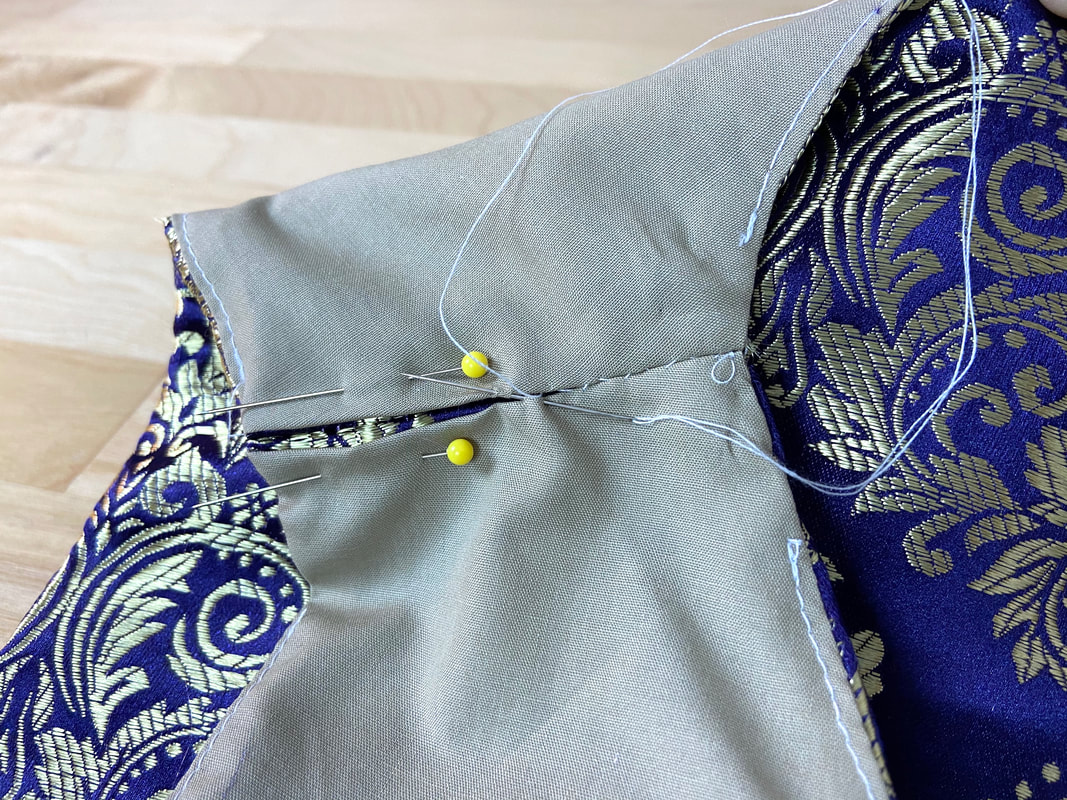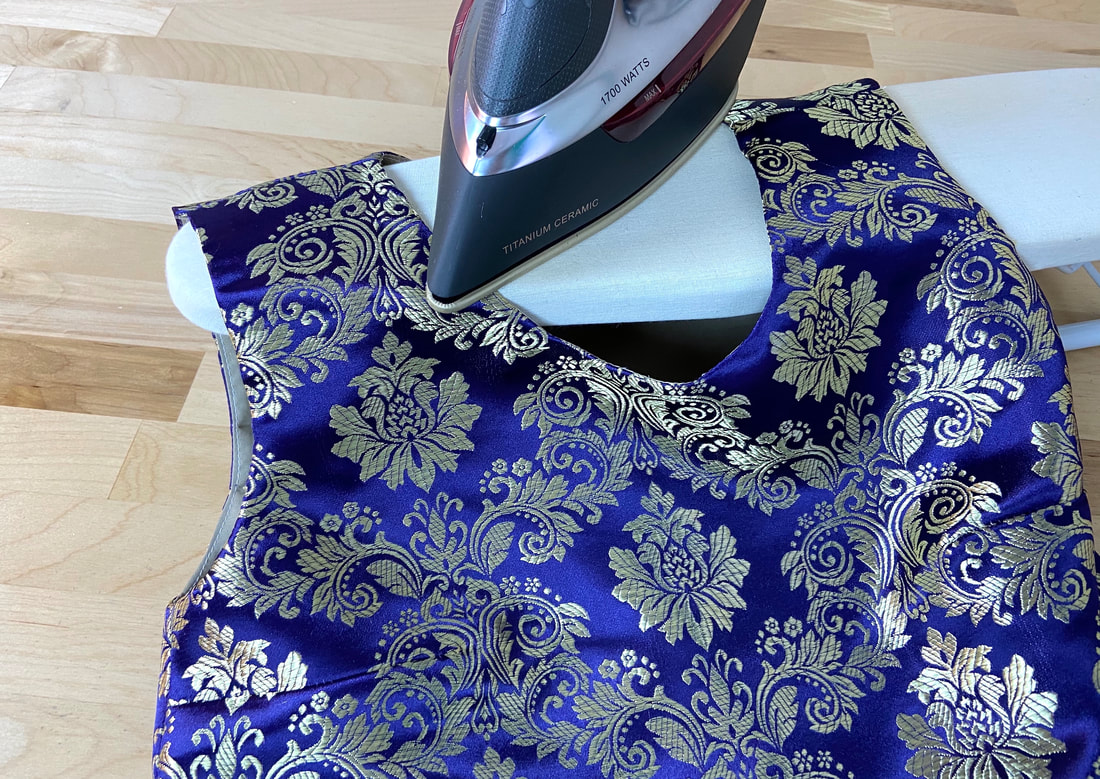Mini Tutorial: Sewing A Lined Garment With No Front/Back Seam
The lining technique shown below is used when the garment does not have a fully separating front or back seam.
1. Start by sewing the sides seams on the garment and lining compartments separately. Iron all seams with the seam allowance layers flat. Leave the shoulder seam edges open on both lining and garment.
2. Place the lining layer on top of the garment unit with fabric face sides touching and all edges aligning. The garment and lining neckline and both armhole edges should align and all side seams should perfectly overlap.
Insert pins perpendicularly through the armhole and neckline edges to keep them securely aligned during the machine stitching process to follow.
Insert pins perpendicularly through the armhole and neckline edges to keep them securely aligned during the machine stitching process to follow.
3. Stitch all edges at the designated seam allowance- 1/2" in this case. Remove each pin as you approach it.
Leave a 1/2" unstitched portion at the beginning and end of each stitch. These open areas will naturally correspond to the shoulder seams.
Leave a 1/2" unstitched portion at the beginning and end of each stitch. These open areas will naturally correspond to the shoulder seams.
4. Once all edges are stitched, each shoulder seam should have a 1/2" unstitched portion on each end as pictured above.
5. Before flipping the garment on its right side, clip wedge notches into the curved areas of the seam allowance along both armhole and neckline edges. These notches are essential in releasing tension and bulk, encouraging the curved finished edges to lay smooth and flat.
6. Flip the garment on its right side and iron the lining seams with the seam allowance layers directed toward the lining layer. All seam allowance edges should be positioned directly underneath the lining. It is easiest to iron on a sleeve board or seam roll as this will allow you to reach the narrower seams at the shoulder area.
Understitch each edge by applying a straight stitch through the lining and seam allowance layers underneath at about 1/8" from the seamline (as shown above). Understitching is essential in maintaining the lined edge's structure and smoothness.
Understitch each edge by applying a straight stitch through the lining and seam allowance layers underneath at about 1/8" from the seamline (as shown above). Understitching is essential in maintaining the lined edge's structure and smoothness.
7. Last but not least, let's complete the shoulder seams: Align the garment's shoulder seam edges with face sides touching and insert pins perpendicularly through both edges to secure. Move the lining layers out of the way for now.
8. Stitch the garment seams at the designated seam allowance (which is 1/2" in this example) being careful not accidentally catch the lining layers in the process. Repeat the alignment, pinning and stitching process on both shoulder seams.
9. To complete the lining layers at each shoulder seam, fold the lining seam edges inward to enclose all raw edges, and pin the lining's abutted folds to secure them in preparation for stitching. Using a hand-applied slipstitch, seal the lining's folded edges together (or to the garment seam allowance underneath) to fully encase all seam allowance layers.
10. To complete the lining application, iron the garment's finished neckline and armhole edges. In this case, it is easiest to iron these curved edges either on a sleeve board or a tailor's ham.

